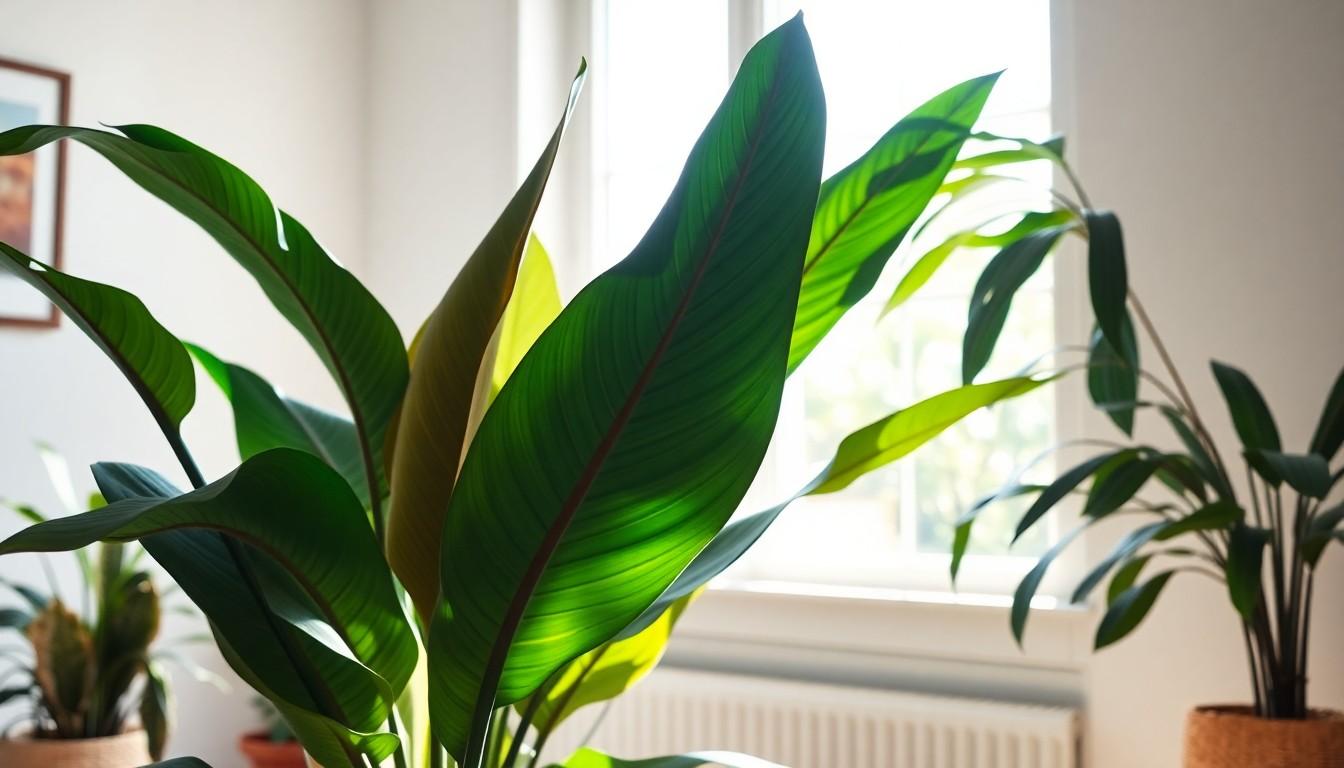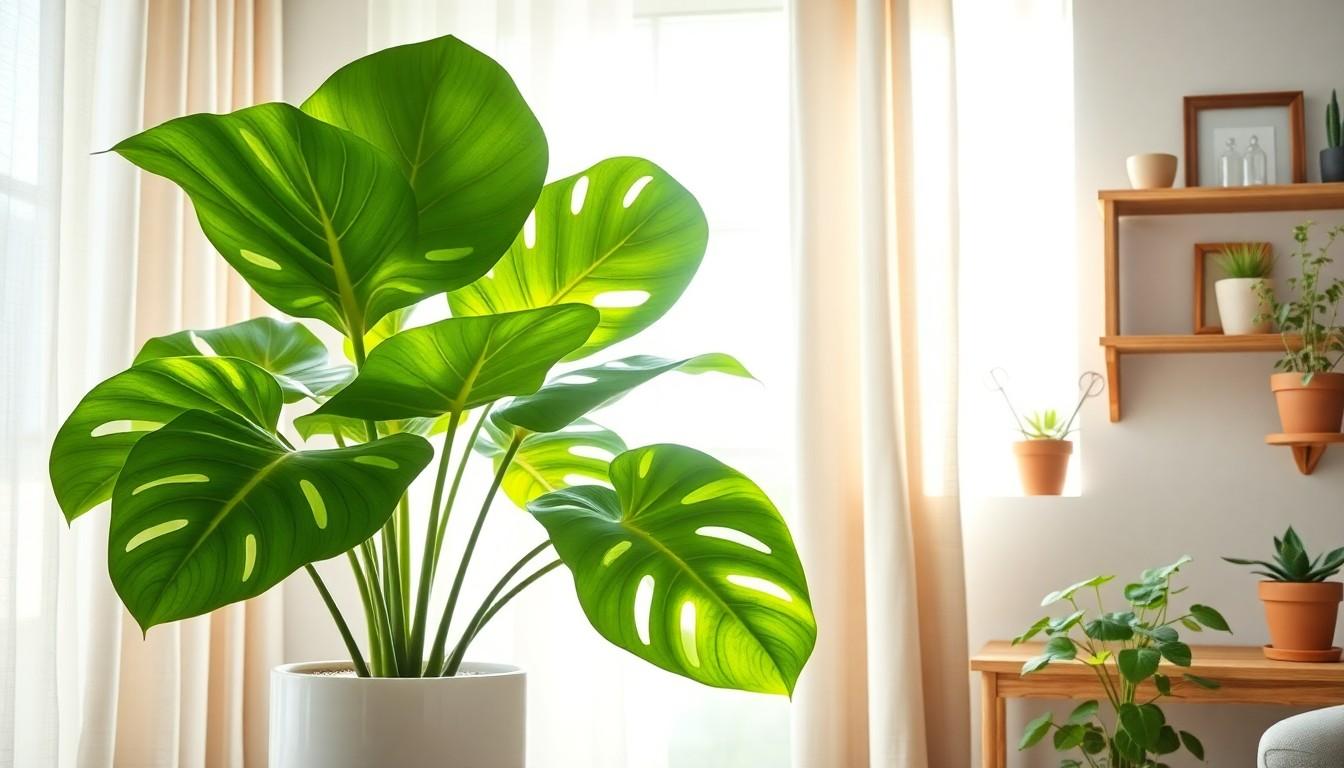If you’re looking to add a touch of tropical flair to your indoor space, the elephant ear plant is your go-to green companion. With its massive, heart-shaped leaves, this plant doesn’t just sit there; it practically demands attention. But before you dive headfirst into the world of indoor gardening, it’s essential to know how to keep this leafy giant happy and thriving.
Caring for an elephant ear plant indoors isn’t rocket science, but it does come with its quirks. From the right lighting to the perfect watering schedule, this plant has its preferences, and trust us, it won’t hesitate to let you know if you’re not meeting them. So, roll up your sleeves, grab your watering can, and get ready to transform your home into a lush oasis with the ultimate guide to elephant ear plant care.
Overview of Elephant Ear Plant Care Indoors
Indoor elephant ear plants thrive with specific care practices. Proper lighting plays a critical role in their development. Bright, indirect sunlight benefits these plants significantly, although they can tolerate some direct sun during the early morning or late afternoon. Positioning them near east or west-facing windows usually yields the best results.
Watering is essential for maintaining healthy growth. It’s important to keep the soil consistently moist but not soggy. Overwatering leads to root rot, while underwatering causes droopy leaves. Checking the top inch of soil is an effective method to determine when to water. Using well-draining soil is also advisable to facilitate proper moisture levels.
Fertilizing supports the plant’s vibrant growth. Adding a balanced liquid fertilizer every 4 to 6 weeks during the growing season promotes lush foliage. Reducing fertilizer application during the winter months allows the elephant ear plant to rest.
Temperature preferences should not be overlooked. These plants favor warm environments, ideally between 65°F and 75°F (18°C and 24°C). Ensure to avoid exposing them to cold drafts or drastic temperature changes.
Humidity levels significantly influence growth. Maintaining humidity around 50% or higher creates optimal conditions. Using a humidifier or placing a tray of water near the plant helps achieve desired humidity levels.
Pruning may sometimes be necessary. Removing yellowing or damaged leaves encourages fresh growth and aids overall health. Regularly inspecting the plant for pests such as spider mites and aphids allows for timely intervention.
By following these care practices, growing an elephant ear plant indoors becomes a rewarding experience.
Understanding Elephant Ear Plants

Elephant ear plants are popular houseplants known for their dramatic foliage. They bring a tropical ambiance to indoor areas while requiring careful attention to their care.
Types of Elephant Ear Plants
Several types of elephant ear plants exist, each with distinct features. Alocasia, known for its bold, arrow-shaped leaves, thrives in warm environments. Colocasia, often referred to as taro, typically showcases heart-shaped leaves and can grow quite large. Another variety, the Xanthosoma, offers unique variegated foliage that adds visual interest. Each type presents unique beauty and requires similar care to flourish indoors.
Characteristics of Elephant Ear Plants
Elephant ear plants feature large, lush leaves that can reach impressive sizes, often spanning several feet in length. Leaves vary in shape and color, ranging from deep green to variegated patterns. Sturdy stems provide support for the abundant foliage. Additionally, these plants exhibit a fast growth rate during the growing season, needing ample space to expand. Their tropical roots give them a preference for humid environments, making attention to humidity essential for optimal growth.
Essential Care Tips for Indoor Elephant Ear Plants
Caring for elephant ear plants indoors requires attention to several key factors. These plants thrive in specific conditions, ensuring lush growth and vibrant foliage.
Optimal Light Conditions
Bright, indirect sunlight is essential for indoor elephant ear plants. Morning or late afternoon sun exposure can be beneficial, but direct light during the hottest part of the day should be avoided. Insufficient light leads to leggy growth and fading leaves. Positioning the plant near a window with filtered light creates an ideal environment. Rotate the plant regularly to ensure even light distribution and prevent uneven growth. If adequate lighting is a challenge, consider using grow lights to supplement natural light, especially during winter months.
Watering Requirements
Elephant ear plants prefer consistently moist soil without becoming soggy. Watering should occur when the top inch of soil feels dry, ensuring the moisture penetrates throughout the root zone. Overwatering presents a risk of root rot, while underwatering leads to droopy leaves and stunted growth. Utilizing pots with drainage holes allows excess water to escape, promoting healthy roots. Incorporating a moisture meter can help gauge soil moisture levels, reducing the risk of common watering mistakes.
Soil Preferences
Well-draining potting mix is crucial for indoor elephant ear plants. A mixture that combines peat, perlite, and compost supports proper drainage while retaining necessary moisture. Avoid heavy soils that retain too much water, as they can suffocate roots and promote rot. Refreshing the soil every couple of years ensures nutrients remain available for the plant’s growth. Regularly inspecting the roots for any signs of distress can help maintain overall plant health.
Common Pests and Problems
Indoor elephant ear plants can face several pests and problems that affect their health. Recognizing these issues early helps maintain vibrant foliage.
Identifying Common Pests
Spider mites present tiny webs and speckled leaves. Aphids, small and green, cluster on new growth, sucking sap. Mealybugs appear as cotton-like masses, often hiding near leaf joints. Thrips create silver streaks on leaves while feeding. These pests thrive in dry conditions, making humidity levels crucial for pest control. Regular inspections simplify the identification process for these pests.
Solutions for Infestations
Isolating the infested plant prevents pests from spreading. Insecticidal soap effectively targets various pests, breaking down their protective coatings. Neem oil serves as another solution, deterring pests and promoting plant health without harming beneficial insects. A strong water spray removes many insects from leaves. Regular cleaning of leaves with a damp cloth also aids in pest prevention. Maintaining consistent humidity further reduces the likelihood of infestations.
Conclusion
Caring for an elephant ear plant indoors can transform any space into a lush oasis. With its stunning foliage and tropical flair it’s a rewarding addition to home decor. By paying attention to its specific needs for light, water, and humidity, anyone can cultivate a healthy and vibrant plant.
Regular maintenance such as pruning and pest inspections will support its growth and longevity. With the right care practices in place, the elephant ear plant can thrive indoors, bringing joy and beauty for years to come. Embracing this tropical gem will not only enhance the aesthetic of a home but also provide a fulfilling gardening experience.

